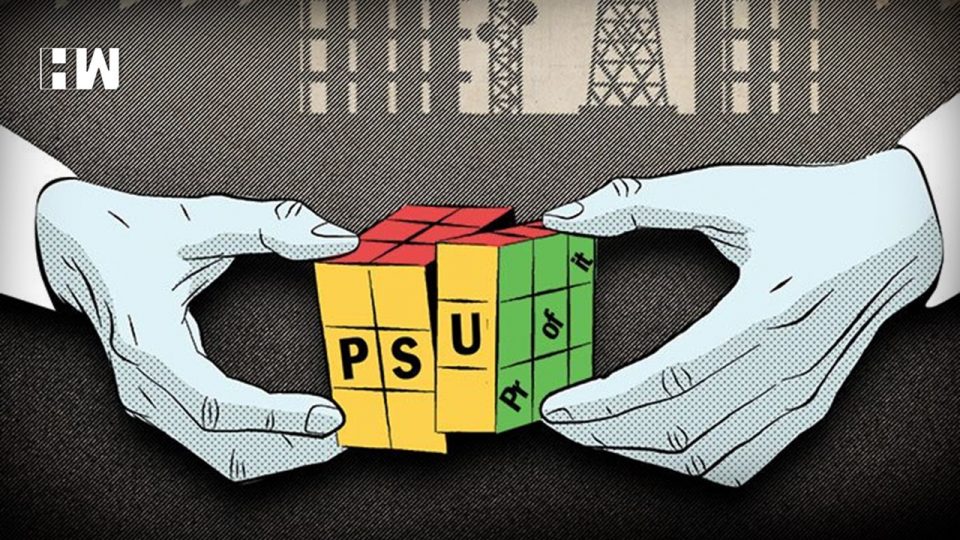It is an undisputed fact that government-owned enterprises ie. PSUs incur huge losses and bleed cash, resulting in a colossal waste of public funds. Bankrupt government-owned banks wherein the government has pumped in over Rs.10 lakh crores by way of recapitalisation in the last fifteen years, and Air India with accumulated losses of almost Rs.50000 crores, as also the loss-making BSNL/MTNL, which now need a fresh investment of over Rs.84000 crores are not the only examples of loss-making PSUs, which devour public funds.
In FY 2018, the combined losses of 71 other PSUs totalled Rs.31261 crores and this loss-making saga continues.
It is in order to stop the cash bleeding of PSUs and the huge waste of public funds that the government has been seeking to get out of the business of being in business. The policy thinking has been that the government must exit from its ownership and management of PSUs in low priority sectors like hotels, tourism, pharma etc., but continue its commanding presence in areas like space, nuclear energy, defence etc.
While the effort of the government to exit PSUs started from 1991 onwards, true privatisation of government entities took place during the Vajpayee led NDA government, when entities like Hotel Centaur, BALCO, Hindustan Zinc were privatised, such that the government actually handed over the ownership and management of its entities to the private sector. The government actually got out of those entities in this process, despite stiff opposition that it faced from various vested parties.
But after the privatisation of public enterprises that took place during the Vajpayee era, no government thereafter has succeeded in privatising public sector enterprises. That is because the UPA I and II headed by Manmohan Singh were coalition governments, with direct or tacit support of communist parties who have been fierce opponents of privatisation of government-owned entities.
The UPA government was neither so committed to privatisation and nor did it have the political power to push through privatisation of the PSUs, in the wake of stiff opposition by trade unions led by communists, who were their political partners whether in the government or outside it. It was also argued then that if the public sector enterprises are inefficient and corrupt, then so are private sector entities, thus seeking to negate the basic justification for privatisation.
But then the government has been in desperate need of funds and the failed efforts to privatise government entities, gave way to disinvestment, as a means to raise funds.
Unlike privatisation, disinvestment was much easier to handle politically, since in disinvestment, the government merely sold part of its stake in PSUs, without giving up its management. Thus disinvestment merely involved the dilution of government ownership stake in PSUs such that ownership did not fall below 51% shareholding and it continued to manage the entities, with the same government management and interference and no opposition from trade unions etc. Thus between 2010 to 2019, the government has not privatised any public sector entity, but has yet raised a huge sum of Rs.3/8 lac crores, through disinvestment of its shareholding in banks, oil companies, insurance companies, steel companies etc.
In this game of disinvestment the Modi government even went further by compelling one PSU to buy one another, such as ONGC buying HPCL for Rs.37000 cr., PFC buying REC for Rs.14000 cr. and LIC buying a bankrupt IDBI for about Rs.54000 crores.
This was one pocket of the government transferring funds to another pocket, thus reducing the disinvestment to a sham.
Now that all such pockets of the government seem to be empty, the government is going one step further viz. asset stripping of PSU entities.
The government is now not selling its ownership stake in PSUs, but is selling their assets, so as to raise funds. It thus proposes to sell telecom towers of BSNL and MTNL, gas pipelines of GAIL, transmission lines of Power grid Corporation, airports of the AAI and land banks of NTPC, Hindustan Antibiotics etc., hoping to raise a sum of Rs.3 lakh crores.
As a result of such assets sales, while the government is impoverishing the PSUs, it is not privatising or closing them. Thus, for example, the telecom towers of BSNL maybe sold, but its loss making operations will continue. Resultantly while these assets ridden PSUs will continue to incur losses and bleed public money, the sale proceeds of these capital assets are not being used to be invested in build up of infrastructure by the government, but will only be used to fund its fiscal deficit arising out of routine revenue government expenditure.
The unfortunate part is that in this journey from privatisation to disinvestment, the entire object of the government exiting from the business of business is already lost.
This asset stripping of PSUs will only make them poor, such that if and when they are sold, the government will get nothing from a buyer, because these loss making PSUs would have had no asset left, and their operations are only loss making.
As an independent media platform, we do not take advertisements from governments and corporate houses. It is you, our readers, who have supported us on our journey to do honest and unbiased journalism. Please contribute, so that we can continue to do the same in future.

